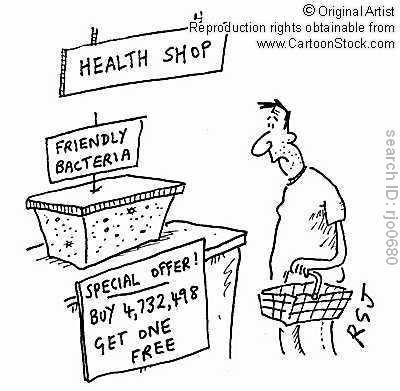The post-antibiotic era looms and it's time to sound the alarm. A nightmare report by the World Health Organization (WHO) warns we are officially running out of drugs for the hardiest of harmful bacteria. This
serious threat is no longer a prediction, it is happening
right now all over the world and can affect
anyone, of any age, in any country.
Bacteria naturally evolve to develop drug-resistance. But the problem is accelerated by the misuse of antibiotics, and once bacteria evolve resistance, there are few new ones to fight them.
One of the biggest barriers to confronting drug-resistance is the lack of data. For example, hospitals, where antibiotic resistant bacteria thrive, aren’t required to report outbreaks. And there’s no global consensus on how to track or report infections. The WHO report is the first effort to gain a full picture of drug-resistance. It found the problem is global and in some countries resistance is already at “alarming levels”. In the U.S. alone, ~$30 billion a year (and growing) is spent on infected patients. The WHO aims to find better ways to track antibiotics in people and food-producing animals, which are among the major consumers of antibiotics.
Antibiotics are one of the miracles of modern science that allow us live longer and healthier. But they've been taken for granted and abused. Unless we take significant actions in producing, prescribing, and using antibiotics, the implications will be so devastating that Cancer and Climate Change will be afterthoughts of human health. The general public can help on the "use" side of the equation by using antibiotics only when prescribed, completing the full prescription (even if you feel better), and never sharing antibiotics or using leftover prescriptions. Health workers can help the "prescription" side by enhancing infection prevention and control in hospitals, and prescribing the right antibiotics only when they are truly needed.
My research focuses on identifying new targets in bacteria for the antibiotic "production" side of the equation. The current antibiotics that are slowly losing the battle primarily target and inhibit the synthesis of DNA, RNA, protein, and the cell wall. These processes are essential for bacterial growth. To develop more effective antibiotics, alternative drug targets are needed. I study transport systems that are found in almost all bacteria, but are absent in humans, making them prime drug targets to combat antibiotic-resistant bacteria. The tranpsport systems are required for DNA inheritance, cell division, metabolism, cell motility, and biofilm formation. These essential processes are required for pathogenesis. In the long-term, my research will allow for the development of an arsenal of antibiotics that stop bacterial growth and infection.
If we do not address this issue now with vigor (and funding!), a simple knee scape can once again be considered potentially fatal. The wording of the report is alarming, “The problem is so serious that it threatens the achievements of modern medicine” and “Far from being an apocalyptic fantasy, [it] is instead a very real possibility for the 21st century.”
For a better grasp of the severity of the situation, I recommend watching FRONTLINE's report Hunting the Nightmare Bacteria.
Bacteria naturally evolve to develop drug-resistance. But the problem is accelerated by the misuse of antibiotics, and once bacteria evolve resistance, there are few new ones to fight them.
One of the biggest barriers to confronting drug-resistance is the lack of data. For example, hospitals, where antibiotic resistant bacteria thrive, aren’t required to report outbreaks. And there’s no global consensus on how to track or report infections. The WHO report is the first effort to gain a full picture of drug-resistance. It found the problem is global and in some countries resistance is already at “alarming levels”. In the U.S. alone, ~$30 billion a year (and growing) is spent on infected patients. The WHO aims to find better ways to track antibiotics in people and food-producing animals, which are among the major consumers of antibiotics.
Antibiotics are one of the miracles of modern science that allow us live longer and healthier. But they've been taken for granted and abused. Unless we take significant actions in producing, prescribing, and using antibiotics, the implications will be so devastating that Cancer and Climate Change will be afterthoughts of human health. The general public can help on the "use" side of the equation by using antibiotics only when prescribed, completing the full prescription (even if you feel better), and never sharing antibiotics or using leftover prescriptions. Health workers can help the "prescription" side by enhancing infection prevention and control in hospitals, and prescribing the right antibiotics only when they are truly needed.
My research focuses on identifying new targets in bacteria for the antibiotic "production" side of the equation. The current antibiotics that are slowly losing the battle primarily target and inhibit the synthesis of DNA, RNA, protein, and the cell wall. These processes are essential for bacterial growth. To develop more effective antibiotics, alternative drug targets are needed. I study transport systems that are found in almost all bacteria, but are absent in humans, making them prime drug targets to combat antibiotic-resistant bacteria. The tranpsport systems are required for DNA inheritance, cell division, metabolism, cell motility, and biofilm formation. These essential processes are required for pathogenesis. In the long-term, my research will allow for the development of an arsenal of antibiotics that stop bacterial growth and infection.
If we do not address this issue now with vigor (and funding!), a simple knee scape can once again be considered potentially fatal. The wording of the report is alarming, “The problem is so serious that it threatens the achievements of modern medicine” and “Far from being an apocalyptic fantasy, [it] is instead a very real possibility for the 21st century.”
For a better grasp of the severity of the situation, I recommend watching FRONTLINE's report Hunting the Nightmare Bacteria.









